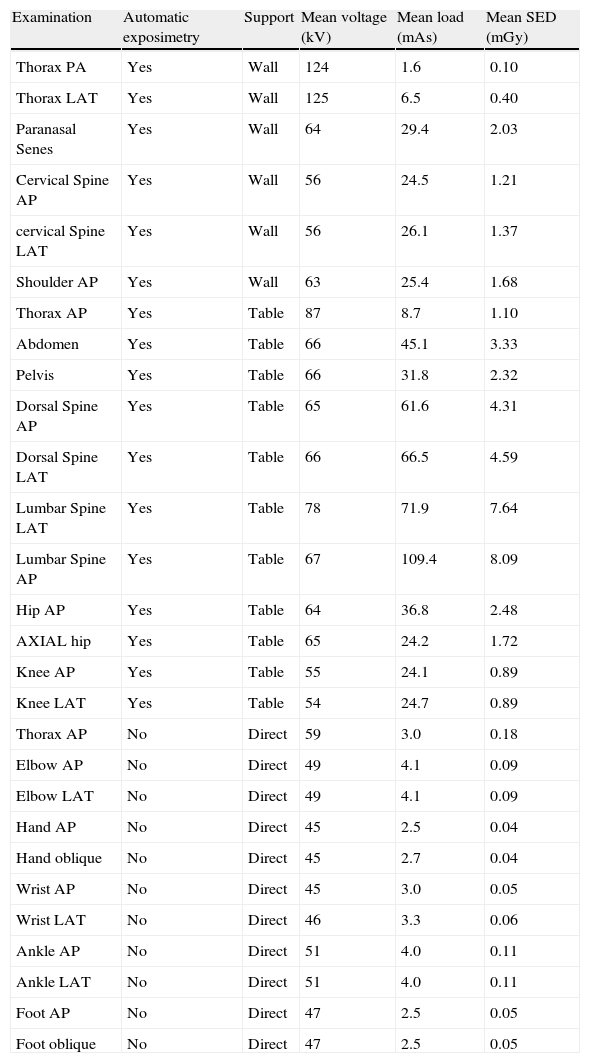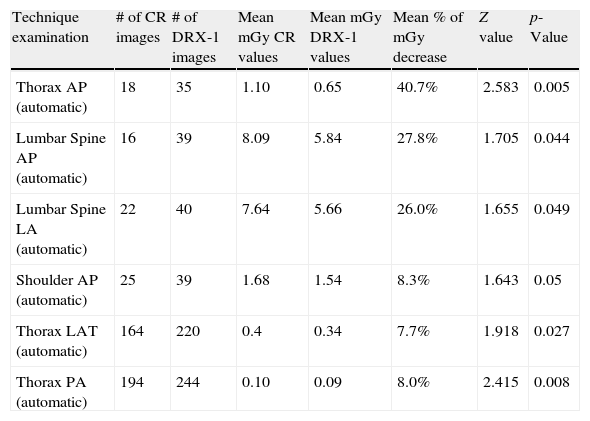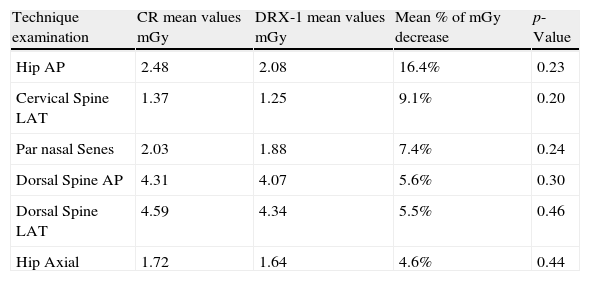To evaluate the implementation of a flat panel digital radiolography (DR) system with WiFi technology in an emergency radiology area in which a computed radiography (CR) system was previously used. We analyzed aspects related to image quality, radiation dose, workflow, and ergonomics.
Material and methodsWe analyzed the results obtained with the CR and WiFi DR systems related with the quality of images analyzed in images obtained using a phantom and after radiologists’ evaluation of radiological images obtained in real patients. We also analyzed the time required for image acquisition and the workflow with the two technological systems. Finally, we analyzed the data related to the dose of radiation in patients before and after the implementation of the new equipment.
ResultsImage quality improved in both the tests carried out with a phantom and in radiological images obtained in patients, which increased from 3 to 4.5 on a 5-point scale. The average time required for image acquisition decreased by 25s per image. The flat panel required less radiation to be delivered in practically all the techniques carried out using automatic dosimetry, although statistically significant differences were found in only some of the techniques (chest, thoracic spine, and lumbar spine).
ConclusionsImplementing the WiFi DR system has brought benefits. Image quality has improved and the dose of radiation to patients has decreased. The new system also has advantages in terms of functionality, ergonomics, and performance.
Evaluar la implantación de un sistema digital de pantalla plana (flat panel digital radiography [DR]) con tecnología WiFi, en una sala de radiología de urgencias que previamente estaba trabajado con un sistema de radiología computarizada (computed radiography [CR]). Se analizaron aspectos de calidad de imagen, reducción de dosis, flujo de trabajo y ergonomía.
Material y métodosSe estudiaron los resultados obtenidos con sistemas CR y DR-WiFi, relacionados con la calidad de imagen analizada en imágenes obtenidas en maniquí y tras la valoración de imágenes radiológicas por radiólogos, también se analizaron tiempos y flujo de trabajo en la realización de los estudios con ambos métodos y especialmente se estudiaron datos de reducción de dosis en grupos de pacientes antes y después de la instalación del nuevo equipamiento.
ResultadosLa calidad de imagen mejoró tanto en las pruebas realizadas sobre maniquí como en la evaluación por radiólogos, que aumentó de 3 a 4,5 en una escala máxima de 5; los tiempos de estudio disminuyeron un promedio de 25 segundos por cada imagen; se comprobó que se requiere utilizar menos radiación con el panel plano en prácticamente todas las técnicas llevadas a cabo con exposimetría automática, aunque el estudio solo ha mostrado diferencias estadísticamente significativas en algunas de las técnicas (tórax, columna dorsal y lumbar).
ConclusionesLa instalación del sistema DR-WiFi ha sido beneficiosa. Se ha producido un incremento en la calidad de imagen con una reducción de la dosis en los pacientes, junto a ventajas en términos de funcionalidad, ergonomía y rendimiento.











